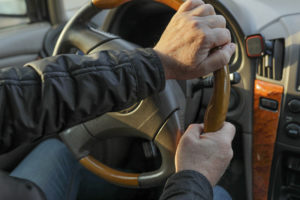New study finds older LGB Americans at greater risk of driving under the influence
January 3, 2022 • Uncategorized
The rates of driving under the influence are of high concern for communities across the U.S.
Injuries, hospitalizations and road-related fatalities are some of the sobering consequences of drunk or drugged driving.
For drivers over age 50, the risks can be compounded, given the challenges they may already face with performance on the road related to vision changes, slower reaction times and other effects of aging. It can create a deadly cocktail when the use of alcohol or drugs enters the mix.

A new study led by Andrew Yockey, PhD, at the University of North Texas Health Science Center at Fort Worth School of Public Health now reveals that lesbian, gay and bisexual Americans older than 50 are at a greater risk of driving under the influence than their heterosexual counterparts.
The study analyzed data from the 2015-2019 National Survey on Drug Use and Health, reflecting 43,238 adults age 50 and over across the U.S.
The research findings, as published in Safety Science, online through ScienceDirect, showed that an estimated 4.82% of older LGB adults drove under the influence of alcohol during the previous year, with 1.33% driving under the influence of marijuana and nearly 1.5% percent driving under the influence of illicit drugs. This included the use of prescription medications and over-the-counter drugs. Overall, this population was 95% more likely to drive under the influence than their heterosexual counterparts.
Those who identified as bisexual were nearly four times more likely to drive under the influence of marijuana and 4.5 times more likely to drive under the influence of illicit drugs in the previous year, leading the researchers to conclude that more attention should be directed to this population to reduce further harm and develop behavioral interventions for health care improvement.
Dr. Yockey conducted the study with HSC colleague Stacy Griner, PhD, and researchers from East Carolina University.
In 2016, an estimated 43.6% of drivers in the U.S. tested positive for operating a vehicle while under the influence of illicit substances. Of those positive, nearly half of drivers tested for two or more illicit substances in their system, such as a combination of marijuana and opioids.
“Not surprisingly, alcohol-impaired driving continues to be the highest risk among Americans in this age group,” Dr. Yockey said. “In a state as large and diverse as Texas, that equates to thousands of preventable car accidents and injuries each year.”
In 2020, there were more than 23,000 DUI-alcohol related crashes in Texas, with nearly 1,000 resulting in fatalities.
Since the pandemic, car crash deaths have surged nationally, with drivers more likely to speed, leave their seatbelts unbuckled and take the wheel while under the influence of alcohol, drugs or a combination of the two. Reports have shown that U.S. roadways are less safe today than they were pre-COVID.
“Drunk and impaired driving continues to be a problem on our roadways,” Dr. Yockey said. “We know that most driving accidents occur on weekends, and that holidays can also pose an increased risk. Given these new findings on older adult LGB drivers, there could be opportunities for making our roads safer by developing awareness programs and public health interventions specifically aimed at this population.”
What’s driving this population to take risky behaviors on the roads?
“Further study is needed to see how much cultural stresses within the LGB community and other factors play a role and what circumstances are leading these drivers to drink or use drugs behind the wheel,” Dr. Yockey said.
“Next steps could be to look at motivations, influences, where these drivers are going or coming from, such as a party, sporting event or celebration, and whether geographical distance increases their risk, such as when driving a shorter distance versus traveling farther away from home.”
Previous prevention programs, Dr. Yockey said, have focused more on younger drivers, especially teens and young adults, while the need grows significantly among older adult populations as society is aging.
Between 2015 and 2050, the proportion of the world’s population older than 60 is expected to double. Today, almost one in 10 people globally are older than 60, with the older adult population expected to outnumber children ages 14 and under by 2050.
“The older adult population is large, diverse and has not yet received appropriate attention in keeping with these rates of growth. There is a definite need for more research and preventions in this area. Older sexual minority adults have often been neglected within this group, yet they are also crucial to keeping our roads safe and preventing harm,” Dr. Yockey said.
“The benefits of widening our focus toward these drivers could be significant – even lifesaving – to communities and to any one of us, or our families, as we travel the roads.”


Social media